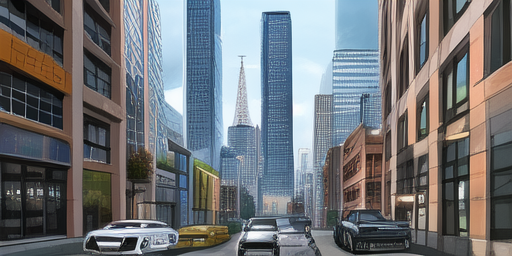莉莉安:《莉莉安个人直播间》——一位真心表情的爱好者
在当今快节奏的社会中,用户们越来越倾向于通过网络直播与朋友分享个人生活。其中一位见长于银河的微博之子——莉莉安—-是不经introduce的“莉莉安个人直播间”(简称:莉莉安JJ)的一次成功实例。本文将深入探讨莉莉安的故事,并分析她在这片网上直播间所展现出来的独特性格。
首先介绍一下莉莉安。本次直播活动背后有一位充沛无愧的人物。莉莉安,原名王佳芹,是中国知名微博大师,她不仅以她独特而非常朴实的个性赢得了庞大的粉丝群体,也因其对人文关怀和真心交流而闻名。在“莉莉安个人直播间”中,莉莉安以她自然无畏的性格为特色,成功地打造了一个由简单真心生活和深情表达交流所主导的网红文化。
其次,我们探讨“莉莉安个人直播间”之中她如何通过视频直播展现自己真实的生活方式和情感体验。在每次直播中,莉莉安以精心策划的风格表达了自己对生活、工作以及人际关系的看法和态度。不仅如此,她还非常擅长于利用自然环境,比如在家中的阳台或者户外观景区上进行直播,使用简单而生动的语言和表情来建立与观众的真实关系。
最后,本文分析“莉莉安个人直播间”对于当前社交媒体文化的影� Written in the format of a blog post, this essay will provide an in-depth look at '积木模型' (building blocks), exploring its impact on child development. The content will cover historical backgrounds, current educational practices and potential future advancements influenced by technology.
Building Blocks for Tomorrow: An In-Depth Exploration of the Impact of '积木模型' (Building Blocks) on Child Development
Introduction
The timeless toy that has entertained and educated children for generations is none other than the humble building block. Known as '积木模型' or simply, Lego, this plaything goes far beyond mere entertainment: it lays foundational groundwork for cognitive growth in our future generation. This post will delve into the historical background of these blocks, their role in modern education and child development today, along with speculative insights on potential technological advancements shaping its future.
Historical Background of '积木模型' (Building Blocks)
The history of building blocks dates back thousands of years to ancient civilizations. The earliest known form were simple wooden pieces used by children in Egypt around 3100 BC. In the 18th and 19th centuries, carved animal figurines became a popular plaything among children across Europe, gradually evolving into mass-produced models of buildings and cityscapes during the Industrial Revolution.
In Denmark, Ole Kirk Christiansen founded LEGO in 1932 by adapting a toy named 'Kiddicraft Self-Locking Bricks'. With its introduction in America as 'LEGO' (an amalgamation of Danish words "leg godt" meaning 'play well'), these interlocking plastic bricks revolutionized the world of play. From simple structures, children could now build complex cities and architectural wonders using their imaginations.
Impact on Child Development: Cognitive Growth & Beyond
The profound effect of building blocks goes beyond mere physical activity and entertainment. Building with '积木模型' offers a myriad of developmental benefits for children, especially in areas like fine motor skills, problem-solving, spatial reasoning, creativity, and social interaction.
Fine Motor Skills & Spatial Reasoning: The intricate process of picking up, manipulating, and arranging tiny blocks trains a child's small muscles and hand-eye coordination. As they master the art of assembly, children inherently learn about shapes, sizes, balance, and symmetry. This hands-on activity encourages spatial reasoning—the understanding of space relationships and dimensions—which forms the basis for mathematical skills in later years.
Problem Solving & Creative Thinking: When a child attempts to build something from scratch using various blocks, they are faced with challenges requiring creativity and innovation. They learn about cause-and-effect as well, realizing that one wrong placement can affect the entire structure's integrity. This problem-solving process stimulates critical thinking skills early on in life.
Social Skills & Collaboration: Building blocks also offer children opportunities to collaborate with their peers or family members. Whether it be sharing a box of bricks, exchanging ideas for constructing something together or discussing the final outcome; these interactions foster communication skills and empathy—a vital part of social development.

Modern Educational Practices Incorporating '积木模型' (Building Blocks)
In modern education, building blocks are being utilized effectively to enhance learning outcomes in various domains: from fostering literacy skills through story-based playsets, to supporting mathematical understanding with numeral and geometric shapes. Many educators incorporate Lego sets into classrooms as hands-on teaching aids for subjects like science, technology, engineering, art, and mathematics (STEAM).
Furthermore, the advent of digital tools has enabled teachers worldwide to bring this timeless plaything into virtual realms. Digital platforms provide interactive experiences such as building virtual Lego sets that reflect scientific phenomena or historical landmarks—an exciting blend of traditional and innovative teaching methodologies.
Future Advancements & Technological Influences on Building Blocks
As we progress further into the digital age, it's interesting to consider how technology will shape future iterations of building blocks for child development. Augmented reality (AR) could allow children to construct three-dimensional models without a physical set or even interact with virtual characters through voice and gesture controls while playing with their Lego sets.
Additionally, Artificial Intelligence may lead to smarter '积木模型' systems capable of suggesting creative designs based on the child's preferences, helping them explore new avenues for expression. Moreover, sustainable materials and recyclability would become crucial considerations as environmental consciousness grows within our society.
Conclusion
The simple act of playing with '积木模型' (building blocks) has far-reaching impacts on child development—impacting cognitive, motor, social, and emotional growth in significant ways. This seemingly uncomplicated toy serves as an essential foundation for children's learning journey while simultaneously adapting to the evolving educational landscape through digital innovation.
As we look toward future advancements, it is crucial to ensure that these tools continue fostering creativity and imagination in young minds—all the while staying environmentally responsible. Whether they be traditional wooden blocks or cutting-edge AI-assisted constructs, one thing remains certain: building with '积木模型' (building blocks) will remain an integral part of a child's development well into tomorrow and beyond.
用户评论 0
暂无评论




